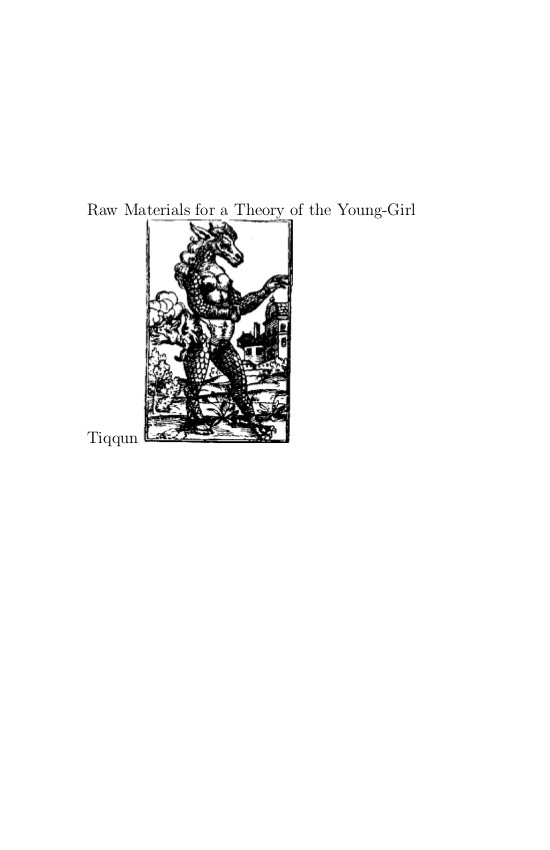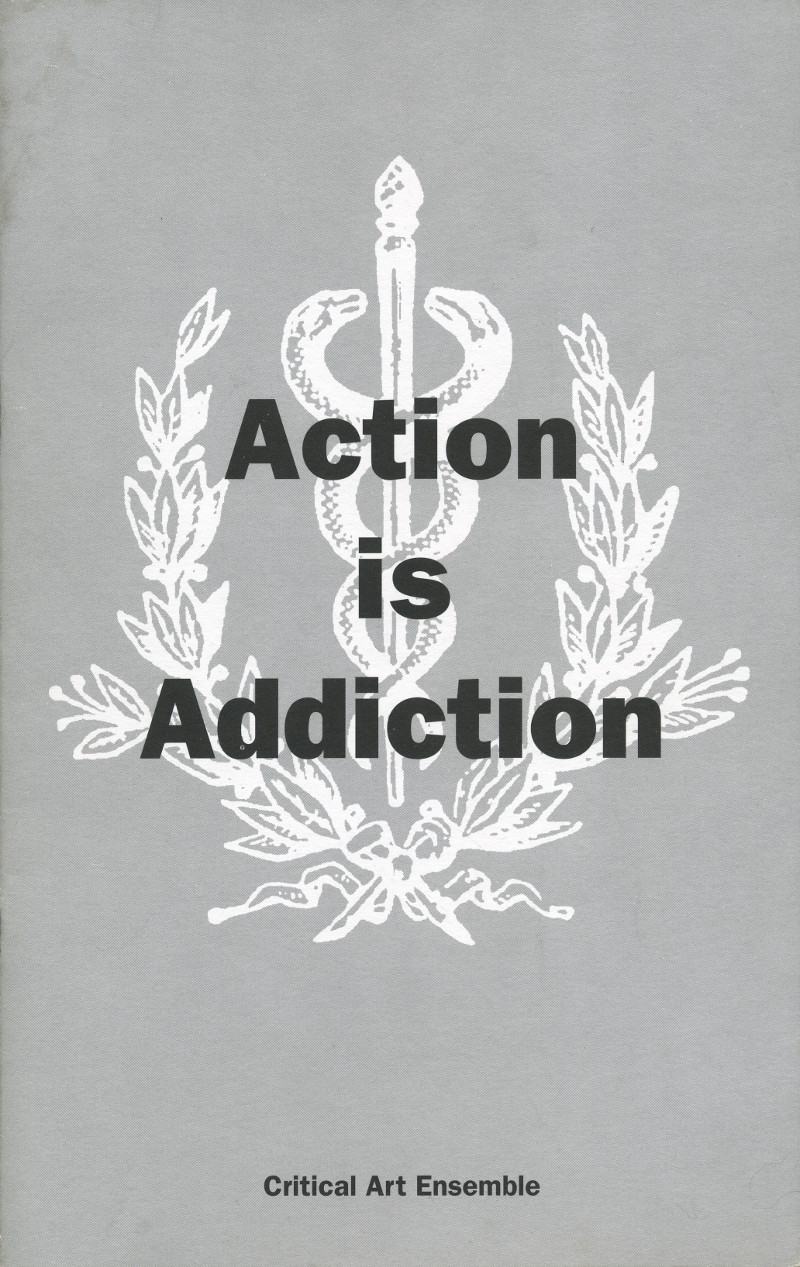Tiqqun: Raw Materials for a Theory of the Young-Girl (1999–) [EN, DE]
Filed under book | Tags: · biopolitics, biopower, body, capitalism, consumerism, desire, feminism, labour, love, metaphysics, philosophy, reification, seduction, sexuality, theory

“First published in France in 1999, Preliminary Materials for a Theory of the Young-Girl dissects the impossibility of love under Empire. The Young-Girl is consumer society’s total product and model citizen: whatever “type” of Young-Girl she may embody, whether by whim or concerted performance, she can only seduce by consuming. Filled with the language of French women’s magazines, rooted in Proust’s figure of Albertine and the amusing misery of (teenage) romance in Witold Gombrowicz’s Ferdydurke, and informed by Pierre Klossowski’s notion of “living currency” and libidinal economy, Preliminary Materials for a Theory of the Young-Girl diagnoses — and makes visible — a phenomenon that is so ubiquitous as to have become transparent.
In the years since the book’s first publication in French, the worlds of fashion, shopping, seduction plans, makeover projects, and eating disorders have moved beyond the comparatively tame domain of paper magazines into the perpetual accessibility of Internet culture. Here the Young-Girl can seek her own reflection in corporate universals and social media exchanges of “personalities” within the impersonal realm of the marketplace. Tracing consumer society’s colonization of youth and sexuality through the Young-Girl’s “freedom” (in magazine terms) to do whatever she wants with her body, Tiqqun exposes the rapaciously competitive and psychically ruinous landscape of modern love.” (from Semiotexte, the publisher of the 2012 edition)
Announcement and discussion about the translation
Commentary (Rob Horning, 2012)
More commentaries (compiled by 1000 Little Hammers, 2013)
Originally published in French as Premiers matériaux pour une Théorie de la Jeune-Fille in Tiqqun 1, 1999
Revised, republished by Éditions Mille et une nuits, 2001.
Translator unknown
Published on younggirl.jottit.com, Jan 2010
PDF (2010)
HTML (2010)
HTML (2012 edition, trans. Ariana Reines, Preliminaries + Chapters 6 & 7)
German edition (2009)
Critical Art Ensemble: Action is Addiction (1992)
Filed under pamphlet | Tags: · addiction, capitalism, consumerism, drugs, health care, medicine, power

A pointed attack on the addiction industry and it’s methods. The pamphlet was placed in hospitals and addition centers. Commissioned be Muranishi/Lederman Gallery, NY, for the Culture Bites exhibition.
Self-published, NY, 1992
via ArtistBooksOnline.org
Tiqqun: Grundbausteine einer Theorie des Jungen-Mädchens (1999/2009) [German]
Filed under book | Tags: · biopolitics, biopower, body, capitalism, consumerism, desire, feminism, labour, metaphysics, philosophy, reification, seduction, sexuality, theory

“Das Junge-Mädchen (la Jeune-Fille) ist die Gestalt, die Ewig-Weibliches und ewige Jugend in sich vereint. Seinen Ursprung hat es im Bankrott des von der totalen Kommerzialisierung überrannten Feminismus. Einzig fähig zu konsumieren (sowohl in der Freizeit wie bei der Arbeit), ist das Junge-Mädchen zugleich das luxuriöseste Konsumgut, das gegenwärtig in Umlauf ist: die Leit-Ware, die dazu dient, alle anderen zu verkaufen. Mit dem Junge-Mädchen wird Wirklichkeit, was sich nur die überdrehtesten Krämerseelen erträumten: die autonome Ware, die spricht und geht, die lebende Sache.
Doch woran erkennt man es? Zunächst daran, dass es ist, was es zu sein scheint, sonst nichts. Zum zweiten hat alles, was das Junge-Mädchen tut, etwas Professionelles an sich, da es seine gesamte Existenz als eine Frage des Managements betrachtet. Als Eigentümerin ihres Körpers, verkauft das Junge-Mädchen (»Sternchen«, Model, Reklame, Bild) seine »Verführungskraft« wie man einst seine »Arbeitskraft« verkaufte. Selbst seine Liebschaften sind Arbeit, und wie jede Arbeit prekär… Schließlich altert das Junge-Mädchen nicht, es verwest.”
„Julien Coupat und seine Freunde können nicht die Autoren der in TIQQUN veröffentlichten Texte sein, weil diese in einer Zone angesiedelt sind, in der es unmöglich ist, zwischen Subjekt und Dispositiv zu unterscheiden, d.h. in der der Begriff des Autors jegliche Bedeutung verloren hat.“
Der Text ist in seiner ersten Version in der Nummer 1 von Tiqqun im Januar 1999 erschienen. Die vorliegende Übersetzung folgt der überarbeiteten Fassung in: TIQQUN, Premiers matériaux pour une théorie de la Jeune-Fille, Rennes 2006.
Übersetzt von Deutsche Sektion der PI (Parti Imaginaire)
Merve Verlag, 2009
IMD 334
ISBN 3883962716, 9783883962719
120 Seiten
PDF
French edition (2001)
English edition (2010)

